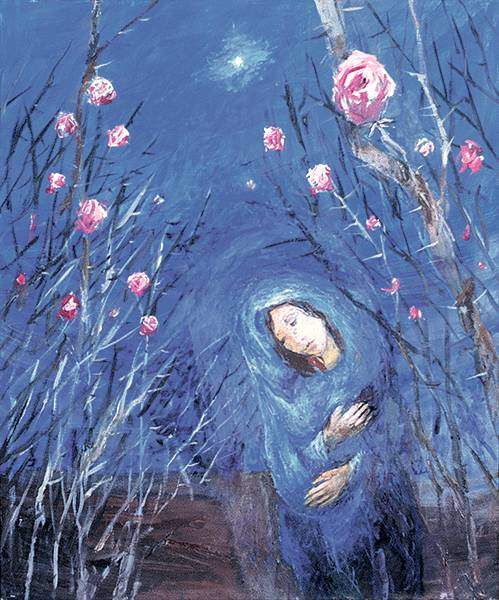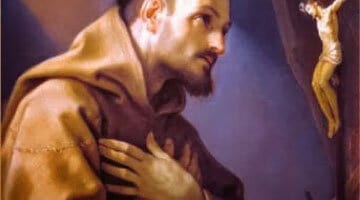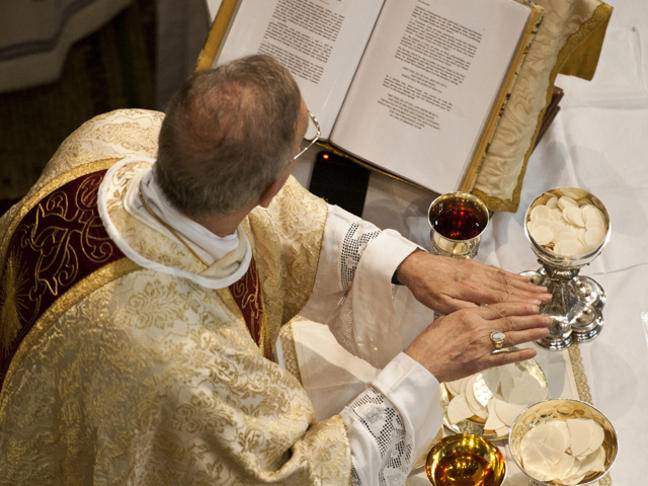Here is a a beautiful Medieval Advent song to help us set focus. It is called, Maria Walks Amid the Thorn, or Maria durch ein’n Dornwald ging.
The “Gesangbuch” of Andernach (1608) refers to “Maria durch ein’n Dornwald ging” as being universally known and liked at that time. The use of the words “Kyrie eleison” show that it had its origin in the first period of the creation of German religious folk songs during the Middle Ages.
The first three stanzas describing the walk of Mary with the child “under her heart” refer to the pericope of the visit of Mary to Elizabeth as recorded in the Gospel of Luke, Luke 1:39–56. It is decorated with the motif of the dead thornwood, a symbol of fertility and death, which begins to bloom during pass of Mary with the divine child. The other stanzas circling around the catechetical question and answer format of the mystery of the Incarnation of God.
1. Maria walks amid the thorn,
Kyrie eleison.
Maria walks amid the thorn,
Which seven years no leaf has born.
Jesus and Maria.
2. What ‘neath her heart doth Mary bear?
Kyrie eleison.
A little child doth Mary bear,
Beneath her heart He nestles there.
Jesus and Maria.
3. And as the two are passing near,
Kyrie eleison,
Lo! roses on the thorns appear,
Lo! roses on the thorns appear.
Jesus and Maria.
There are many folk songs from the 60’s that were secularized versions of religious ‘folk’ music from the Middle Ages founded on the telling of biblical themes. For example, Peter, Paul, and Mary’s “There is A Ship” ( https://www.youtube.com/watch?v=zTEdhMwXiM4 ) is a highly stripped down and lyrically altered version, of ‘Es kommt ein Schiff, geladen’, There Comes a Ship A Laden.
1. There comes a ship a’ laden
Up to its highest board,
Bearing God’s Son, full of grace,
The Father’s everlasting Word.
2. The ship goes quietly into dock,
It carries a priceless load;
The sail is Love,
The Holy Spirit, the mast.
3. The anchor clings to earth,
There is the ship at shore.
The Word has for us become flesh,
The Son has been sent to us.
4. Born in Bethlehem
In the stable, a little child
Gives Himself for us to lose;
Blessed it must be.
5. And whoever embraces this child,
With joy, with kisses,
Must first suffer with Him
Great pain and much torment.
6. Then die with Him too
And be spiritually resurrected,
Inherit eternal life,
As will happen to Him.
The same is true of Richard and Mimi Farina’s 1963 hit, the Swallow Song, ( https://www.youtube.com/watch?v=zHNSAK-iWy0 ) which is rooted in a Medieval Sephardic (Spanish Jewish) song called, The Rose Blooms (or La Rosa Enflorece) or The Nightingale.
The rose blooms in May
My soul darkens, suffering from love
Suffering from love
Nightingales sing, sighing of love
And the passion kills me, my pain increases
my pain increases
Come more quickly, my dove
More quickly to me
More quickly you my soul, because I feel myself dying
I feel myself
dying
The rose blooms in May
My soul darkens, suffering from love
Suffering from love
Suffering from love
Such beautiful lyrics were Psalm-based themes that echo the praise-poetry and songs of David.
It is time to rediscover this beautiful mode of music, to cultivate the sacred and restore our Christian culture rooted in the proper worship of God — especially during Advent and Christmas seasons.
It is great to see the many Catholic musicians who already work in this corner of the Lord’s vineyard; folk musician such as… The Innocence Mission, Alanna Boudreau, and many others.
Happy Advent!




